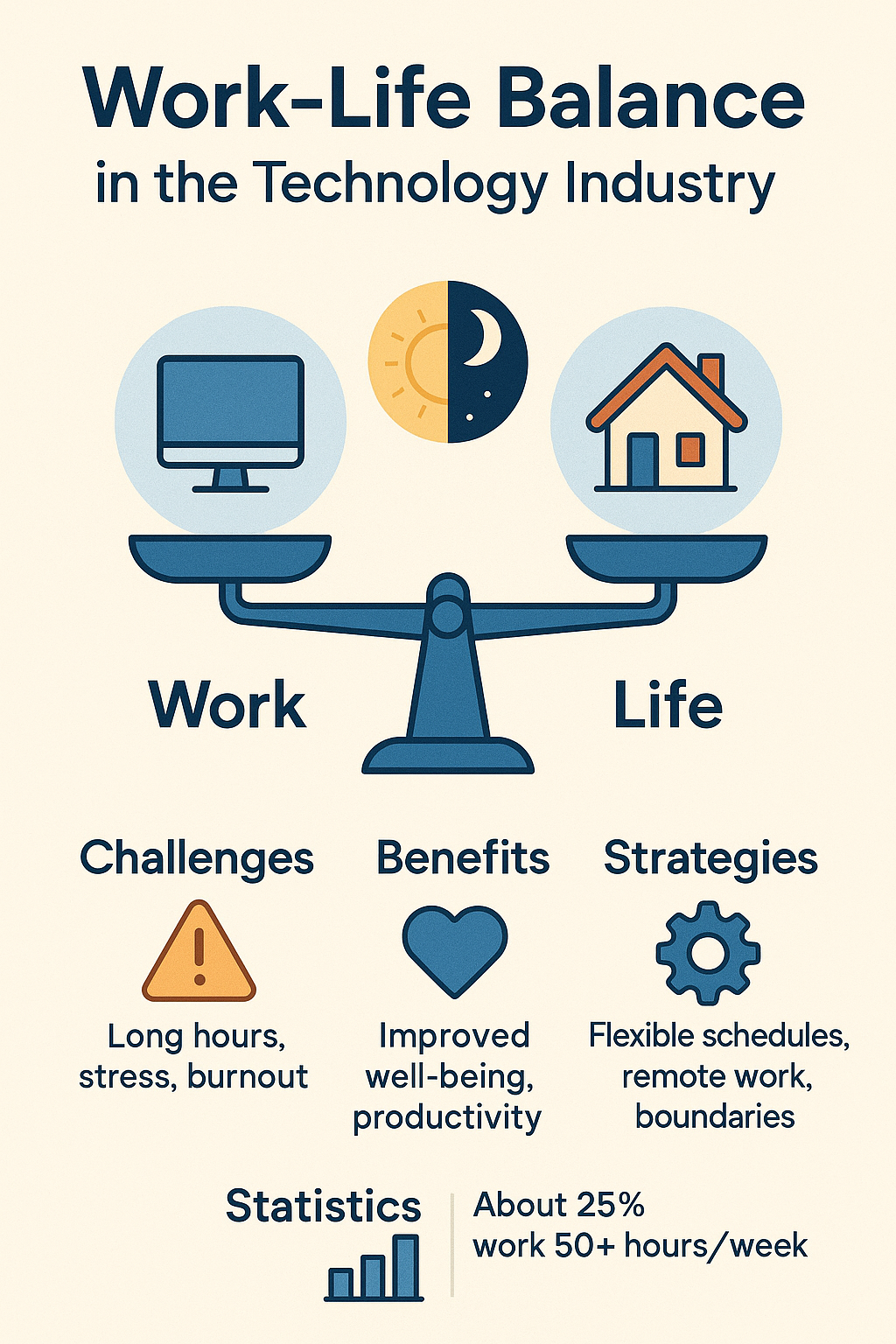Work-Life Balance in the Tech Industry: Breaking Free from the “Always-On” Culture
The tech industry has long perpetuated the myth of the “always-on” culture—where working longer hours supposedly equals greater dedication and success. This misconception has created a toxic environment where poor work-life balance is worn as a badge of honor, particularly damaging mental health and overall well-being among tech professionals. At Fortified Data, we’ve learned that achieving work-life balance in the tech industry isn’t just a nice-to-have benefit—it’s a performance necessity that directly impacts the quality of our work and our ability to serve clients effectively.
The challenge becomes even more complex in our fully remote workforce. When your office is always there in your home, the boundaries between work and personal life become increasingly blurred. Add the constant stream of communication tools that reach directly to our cell phones—devices we carry everywhere—and it becomes clear why we must be intentional about when to silence these notifications. Without proper boundaries, we can never truly recharge and rejuvenate, with work constantly looming over our personal time.
The Unique Challenges of Tech Work-Life Balance
The Problem of Interesting Work
One of the most significant challenges in maintaining healthy work-life balance in the tech industry stems from genuinely loving what we do. When you’re passionate about database administration, coding, or solving complex technical problems, traditional boundaries blur in ways that other industries don’t experience. This presents a unique paradox: the very passion that makes someone excellent at their job can become the source of burnout.
At Fortified Data, we specifically seek team members who love what they do. However, we’ve learned that even when you’re passionate about your work, there’s still significant opportunity to burn out. We must ensure our team takes appropriate rest and rejuvenation time, preventing something they love from becoming something they hate. The midnight coding session trap is real—when you’re in the flow of solving an interesting problem, it’s easy to lose track of time and work well beyond reasonable hours.
The key is recognizing that quality work during designated working hours is far more valuable than extended hours of diminished performance. We emphasize the working-to-live model rather than living-to-work, but with a crucial caveat: when you are at work, give it your all and produce your best work. This approach ensures that time spent working is meaningful and productive, making time away from work more guilt-free and restorative, enhancing overall tech work-life balance.
Client Expectations and Emergency Response
Managing 24/7 client needs without burning out your team requires sophisticated systems and clear protocols. Our database administrators are always there for clients in their time of need—whether that’s at 2:00 AM or 2:00 PM. However, we’ve implemented a solid support structure to ensure team members don’t feel isolated during these critical moments.
We maintain a support chain for those handling overnight and off-hours calls, allowing them to reach out to team members for second opinions or additional assistance. This system prevents any single individual from bearing the full weight of emergency response while ensuring clients receive the expert support they need.
Equally important is setting realistic expectations for response times. While we aim to complete every client request as quickly as possible, we appropriately triage requests to prevent our team from feeling overwhelmed. When a call comes in, our first priority is assessing whether it represents a critical business impact or a lesser need that can be completed at a more sustainable pace. This approach protects our team’s mental health while maintaining the high service standards our clients expect, contributing to better work-life balance in tech.
Building Sustainable Work Practices for Tech Professionals
Defining “Done” in a Remote Environment
Working from home requires intentional practices to create clear start and stop times when your office is integrated into your living space. While daily schedules may vary based on client and team needs, establishing personal boundaries is crucial for maintaining work environment balance within the tech industry.
One effective strategy involves creating a daily list of tasks with proposed completion times and a target end time for the workday. This provides a concrete goal to pursue while remaining flexible enough to accommodate unexpected client needs. The key is having a framework that guides daily structure without becoming rigid.
Shutdown rituals play a crucial role in transitioning from work mode to personal time. This might involve putting your computer to sleep, powering it down completely, closing your office door, or setting your status to away in communication platforms. The specific ritual matters less than consistency in signaling to yourself and others that the workday has ended.
Technology Boundaries for Tech Workers
Ironically, tech professionals often need to use technology to limit technology’s intrusion into their personal lives. Communication platforms like Slack and Teams offer powerful tools for managing availability. Setting yourself to “away” status and pausing notifications creates space for downtime without the constant buzzing of incoming messages. This is a critical aspect of managing work-life balance in the tech industry.
Effective notification management strategies are essential for maintaining boundaries between work life and personal time. This includes customizing which notifications reach your personal devices during off-hours and establishing protocols for truly urgent communications versus routine updates that can wait until the next business day.
Leadership’s Role in Modeling Balance
Leadership teams often accidentally encourage overwork through their own behaviors and communication patterns. When leaders send emails late at night or make themselves constantly available, it creates implicit pressure for team members to do the same. At Fortified Data, our Senior Management Team works actively to model sustainable work practices and promote work-life balance.
Personal examples of both balance wins and failures help normalize the ongoing process of finding equilibrium. For instance, assigning priorities and timelines to daily tasks allows for ending each day knowing that urgent items were completed while non-urgent tasks can wait for appropriate timing. This approach reduces anxiety and creates sustainable work rhythms.
Creating team cultures that celebrate sustainable performance rather than just output volume requires intentional effort. We recognize team members who demonstrate excellent work within reasonable hours, solve problems efficiently, and maintain consistent quality over time. This shifts the focus from quantity of hours worked to quality of work produced, supporting a healthier work-life balance for tech industry professionals.
Practical Strategies That Actually Work for Work-Life Balance
Time-Blocking and Boundary Setting
Time-blocking techniques help tech professionals manage complex project requirements while maintaining personal boundaries. This involves dedicating specific time blocks to different types of work—deep technical work, client communications, team collaboration, and administrative tasks. By batching similar activities, professionals can work more efficiently and create natural stopping points, aiding work-life balance.
The Power of Saying “No” to Scope Creep
This presents one of the most challenging aspects of maintaining work-life balance in client-focused tech companies. Our culture of team members who genuinely want to excel and make clients happy can lead to accepting scope creep that ultimately harms both the team member and client relationship.
Learning to say no professionally requires recognizing when requests fall outside our technical expertise or agreed-upon scope. Open communication becomes crucial—explaining what we can and cannot provide while offering alternatives or partner referrals. When we blindly accept scope creep, we set ourselves up for more difficult conversations later while potentially compromising work quality and team well-being.
The Business Case for Sustainable Work Practices
Organizations that offer flexible work arrangements and support healthy work-life balance in the tech industry consistently outperform those that don’t. Tech companies that prioritize employee well-being see reduced turnover, higher productivity during working hours, and better client satisfaction scores.
Remote work environments, when properly managed, can actually enhance work-life balance by eliminating commute time and allowing for more flexible work schedules. However, this requires intentional practices to prevent the “always available” trap that can emerge when home and office spaces merge.
Professional and personal life integration works best when both domains are given appropriate attention and respect. Rather than trying to eliminate all boundaries, successful tech professionals learn to create permeable boundaries that can flex when needed while maintaining core protected time for rest and personal relationships.

Balance as a Long-Term Strategy for the Tech Industry
Achieving sustainable work-life balance isn’t something you accomplish once and forget about. It requires ongoing attention and adjustment as your role, personal circumstances, and industry demands evolve. Are you really balancing if you only try strategies once or implement practices for just a few days? True balance requires testing various approaches to see what works sustainably for your specific situation.
The tech industry’s future depends on moving beyond the outdated “always-on” mentality toward practices that support both individual well-being and business success. Companies that recognize work-life balance in the tech industry as a strategic advantage rather than a luxury will attract the best talent and deliver superior results for their clients.
At Fortified Data, we’ve learned that sustainable work practices aren’t just beneficial for our team members—they’re essential for providing the consistent, high-quality service our clients depend on. When our team is well-rested, properly supported, and working within sustainable parameters, everyone benefits: our employees, our clients, and our business results.
The path forward requires intentional leadership, clear boundaries, and a commitment to long-term sustainability over short-term intensity. In an industry known for rapid change and high demands, companies that master this work-life balance will define the future of tech work.



Leave a Reply
Want to join the discussion?Feel free to contribute!